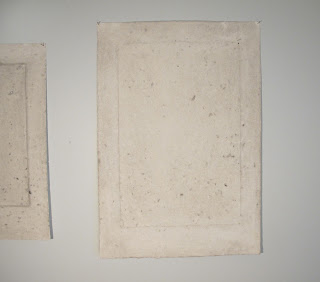This month we are happy to welcome Andrew Salmon and Maggie Stein to the Shuckster space!
Andrew Salmon
Fascinated by the removal of mountains, the emergence of new fungi, and what happens when the wild has come to an end, I create to catalogue such events as well as imagine potential futures. I roam the myth of the landscape in mourning and jubilation. These sculptures archive my most recent wanderings.
Maggie Stein
First, let's discuss the different steps involved in making a quilt.
1. PIECING - Sewing small pieces of cloth together to make a quilt top. Sometimes there are blocks with a repeating pattern. Sometimes pieces are separated by long strips called sashing.
2. LAYERING - Stacking the quilt back (usually a solid piece of cotton cloth), the batting (fluffy center of a quilt, made of wool/cotton/bamboo), and the quilt top (perhaps with a border added) - this is sometimes called a quilt sandwich.
3. QUILTING - Stitching through all three layers of the quilt. This serves three purposes (thanks, Wikipedia):
- to secure the layers to each other
- to add to the beauty and design of the finished quilt, and
- to trap air within the quilted sections.
4. FINISHING - A final border, called binding, encloses the unfinished edges along the perimeter of the quilt. After this, a quilt is usually washed, an slight shrinkage in the cloth creates the wrinkles often associated with a handmade quilt.
I promise this will be useful in a moment.
The hexagon chip quilt was hand-pieced, then machine-quilted. Yes, this means that every single hexagon was hand-stitched to the hexagons surrounding it. The quilt is unfinished on purpose -so that you can look inside and see the stitches between hexagons.
I love hand-piecing a quilt because, until the final stages, the work is portable. For over a year, I would stitch hexagons during meetings, while watching television, and on public transportation. Once you learn the rhythm of the stitches, it takes very little attention.
The paint chip quilt was machine-pieced, then hand-quilted. Assembling this quilt top was much more about playing with color than learning a new technique, and I believe it took less than a week to assemble.
At this time, a friend offered to teach me how to hand-quilt, and I thought the uneven stitches and chaotic lines of my first attempt would add some close-up visual interest to this piece.
These are my first and third attempts at full-size quilts - the second lives in Kentucky with my nephew.
Also on display at the Shuckster this month:
- a visual tutorial for hand-piecing hexagons;
- a small piece representing one late night's foray into color and pattern; and
- one section from my latest endeavor, a cathedral window pattern, which not only combines piecing and quilting into one step, but includes a significant amount of what I'd call origami.
More Photos to come!























































